DNA profiling (likewise called DNA fingerprinting, DNA testing, or DNA composing) is the way toward deciding a person's DNA qualities, called a DNA profile, that is probably going to be distinctive in disconnected people, subsequently being as one of a kind to people as are fingerprints (henceforth the elective name for the system). DNA profiling with the point of distinguishing not an individual but rather an animal groups is called DNA barcoding.

DNA fingerprinting
Every individual has DNA that delivers the specific proteins required forever, in addition to areas of DNA which are novel to the person.
By cutting an example of DNA into pieces and contrasting it and different examples it's conceivable to work out if the DNA has originated from a similar individual. This procedure is called DNA fingerprinting, and is a system used to help understand wrongdoings where the suspect may have left an example of body tissue at the wrongdoing scene.
Step by step instructions to deliver a DNA unique finger impression - higher level
Isolation - isolate the DNA from different tissues
Discontinuity - utilize a catalyst to break the DNA into short lengths
Partition - pass an electric current over a layer of gel which has the DNA sections toward one side. The pieces will move distinctive separations over the gel. This is called gel electrophoresis
Correlation - coordinate the example of pieces on the gel with different examples of DNA
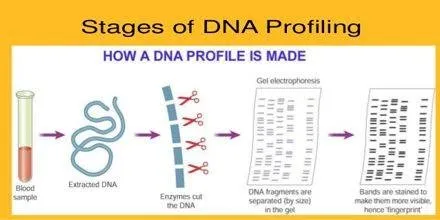
History of DNA fingerprinting
DNA profiling, as we probably are aware of it today, was produced because of two free leaps forward in atomic science that happened in the meantime on various sides of the Atlantic. In the USA the polymerase chain response (PCR) was created by Kary Mullis, while in the UK 'DNA fingerprinting' was being found by Educator Sir Alec Jeffreys at the College of Leicester.
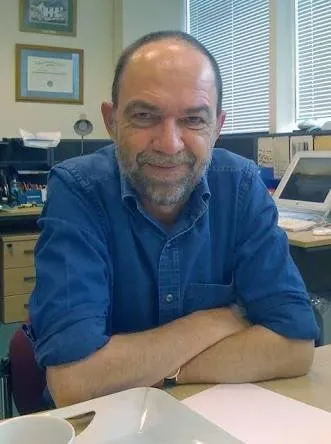
DNA was first used to help a criminal examination by Professor Jeffreys in 1986. This examination utilized DNA fingerprinting methods to interface semen recolor tests, gathered from two assaults/kills that had happened three years separated in 1983 and 1986, in a little town in Leicestershire, UK. The likelihood of this match happening by chance was computed as 5.8 x 10-8. This outcome not just connected the two violations and secured the conviction of the culprit Colin Pitchfork, yet in addition absolved a honest man involved in the homicides and prompted the main mass screening venture attempted for DNA profiling on the planet.
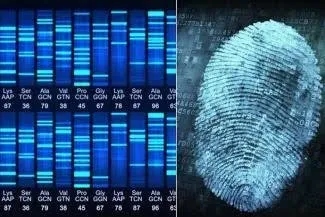
Uses of DNA Fingerprinting
*Since it was developed in 1984, DNA fingerprinting frequently has been utilized as a part of court cases and lawful issues. It can: *
•Physically associate a bit of confirmation to a man or discount somebody as a suspect.
•Show who your folks, kin, and different relatives might be.
•Distinguish a dead body that is excessively old or harmed, making it impossible to be conspicuous.
*DNA fingerprinting is amazingly exact. Most nations now keep DNA records on document similarly police keep duplicates of genuine fingerprints. It additionally has restorative employments. It can: *
•Match tissues of organ givers with those of individuals who require transplants.
•Recognize ailments that are gone down through your family.
•Help discover cures for those ailments, called genetic conditions.
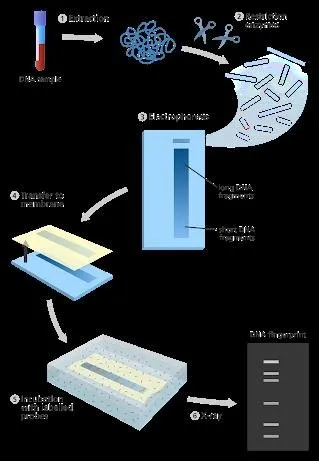
**Instructions to create a hereditary unique mark: **
The initial step to making a hereditary unique mark requires getting an example of DNA. This example can originate from blood, semen, hair or salivation, and might be a to a great degree little example. The root from a solitary strand of hair is sufficient for analysts to work with. This example contains white platelets which are torn open utilizing cleanser, and all the useable DNA is isolated from the additional cell material. Next the confinement proteins are utilized to cut the DNA into littler pieces. Limitation proteins work by cutting the DNA at a particular grouping, which creates either limit closes or sticky closures, and results in numerous sections of various lengths. These parts are called limitation pieces length polymorphisms, or RFLPs.
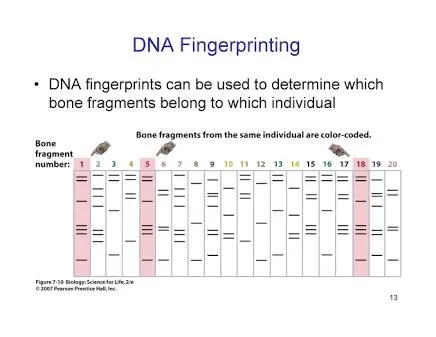
These RFLPs are then put into an agarose gel. Utilizing gel electrophoresis, the pieces are arranged by measure. At the point when the current of the electric field is turned on, the negative RFLPs will begin to move over the gel towards the positive end. The littler pieces move more distant over the gel than the bigger ones. Likewise, salt is in charge of causing the hydrogen bonds to break, and the DNA to wind up single-stranded. At the point when the DNA ends up single-stranded, it makes nucleotides turn out to be free, and they will later be utilized to combine up with tests. The gel is then secured by a bit of nylon and thin paper towels, which are utilized to assimilate dampness from the gel. The DNA pieces get tenderly exchanged from the gel to the surface of the nylon. This procedure is called smudging.
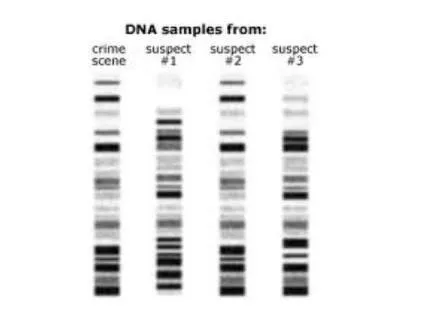
At last, radioactive tests get washed over the nylon surface. These tests will join to any DNA pieces that offer a similar creation. The last advance to making a hereditary unique finger impression is to put a photographic film over the nylon surface. The tests leave blemishes on the film wherever they connected to the RFLPs. Dull groups will then show up when the film is created, which denotes the length of the RFLPs that were hybridized. Specialists are then ready to peruse the unique mark and match it to others. They do this by setting the xray on a light foundation, and looking at the RFLP lengths in the DNA from the wrongdoing scene, to the DNA of the suspect.
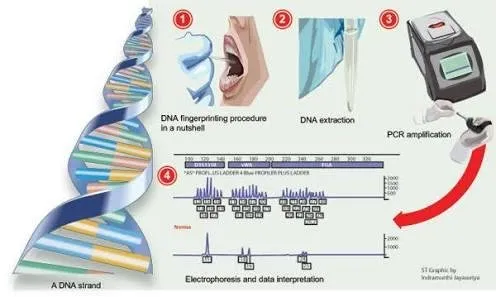
When fingerprinting was a genuinely new process, amid 1984-1990, it could take as long as four to a month and a half of lab work to finish and analyze DNA fingerprinting proof. Jeffreys was in charge of thinking of the first DNA fingerprinting strategy and in November of 1991, he likewise was in charge of making a superior test that could acquire brings about as meager as two days.